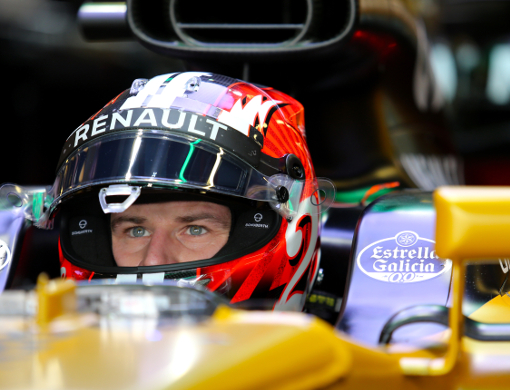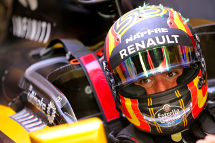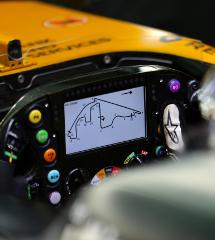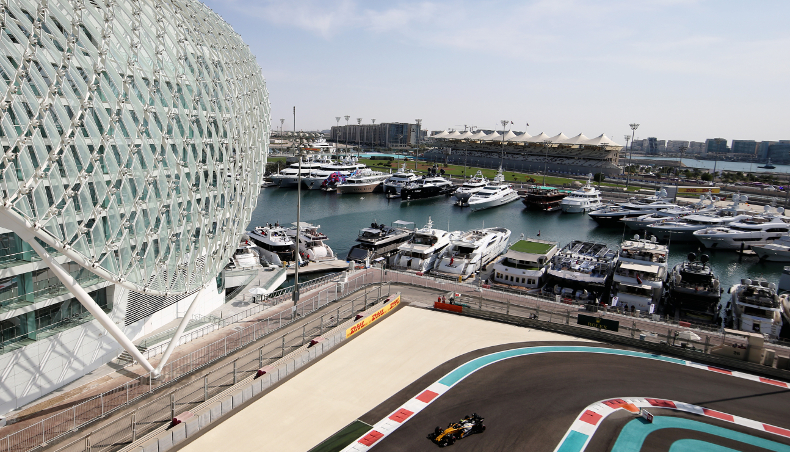

It is unlikely that the highs in Abu Dhabi this weekend will exceed those registered in Bahrain earlier in the year (43°C ambient temperature and 56°C track temperature), but it is nonetheless a variable that looks set to play a significant role on Sunday, with a forecasted drop of 15°C between the start of the race at 5pm local time and the chequered flag after nightfall.
Preheated tyres
This drop in temperature will impact primarily on race strategy and tyre choice. Tyres are the sole points of contact between the R.S.17 and the track, and their temperature is a decisive factor in the way they chemically interact with the asphalt:
“Front tyre temperatures vary a lot throughout races,” explains Renault Sport Formula One Team Chief Race Engineer, Ciaron Pilbeam. “The maximum temperature normally occurs towards the beginning, and can exceed 140°C. The rear tyres generally do not reach such high peak temperatures as the fronts, but they can still climb to 130°C.”

To ensure that they are ready for action, the tyres are warmed up in heated blankets before being fitted to the R.S.17.
“Slick tyres are preheated to a maximum of 110°C,” adds Ciaron. “Intermediate and full wet tyres use lower temperatures of 80°C and 60°C, respectively.”
1,200°C brakes!
At the core of the wheel, and therefore in close proximity to the tyres, a Formula 1 car’s brakes send thermometers into a whole other stratosphere:
“The maximum temperature of the carbon brakes occurs just after the start of heavy braking and typically reaches peaks of around 1,200°C, although only for a short time.”

Other factors are less extreme but more consistent.
“Exhaust fumes can climb as high as 1,000°C,” reveals Renault Sport Formula One Team Engine Technical Director, Rémi Taffin, who stops short of specifying the maximum temperature inside the combustion chamber: “It’s a secret! What I can say is that the regular engine operating temperatures are 130°C for the water and 120°C for the oil.”
Striking the perfect balance
It goes without saying that instances of excessive overheating can have dramatic consequences for the powertrain, which is where the cooling system comes in.
"This is a critical and very complicated area,” acknowledges Renault Sport Formula One Team Chassis Technical Director, Nick Chester. “With the R.S.17, we have several different cooling circuits and coolant fluids. Too much cooling for the power unit or chassis components is generally detrimental to aerodynamic performance, so we tend to run as little cooling as possible – which means sticking close to the maximum recommended operating temperature for each assembly.”



There are additional elements that further complicate the situation, as Nick notes:
“Aside from variations in ambient and track temperature, the cooling system must also be able to cope with situations such as following closely in the wheel tracks of other cars, sitting stationary on the starting grid or running slowly behind the safety car in the race, so choosing the appropriate cooling level is one of the key decisions over a race weekend.”
The 15°C drop in temperature during the Abu Dhabi Grand Prix will only add to that challenge at 2pm CET on Sunday, as Formula 1 revs up for the final race of its 2017 campaign...
View more




